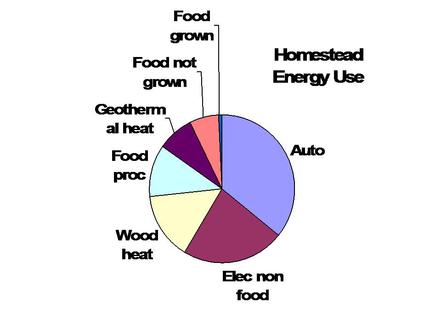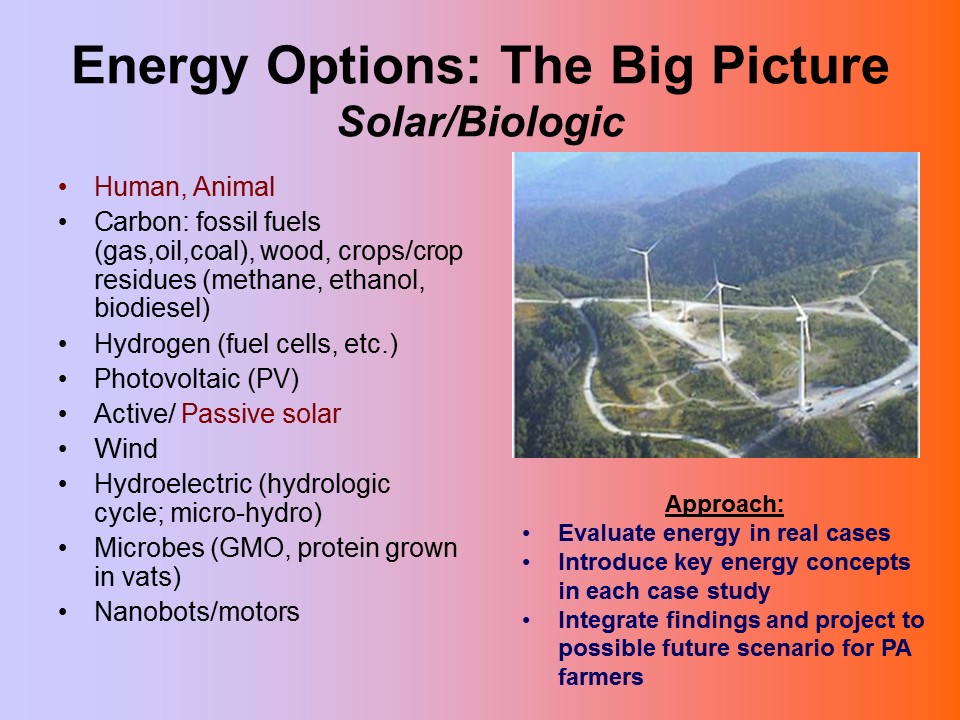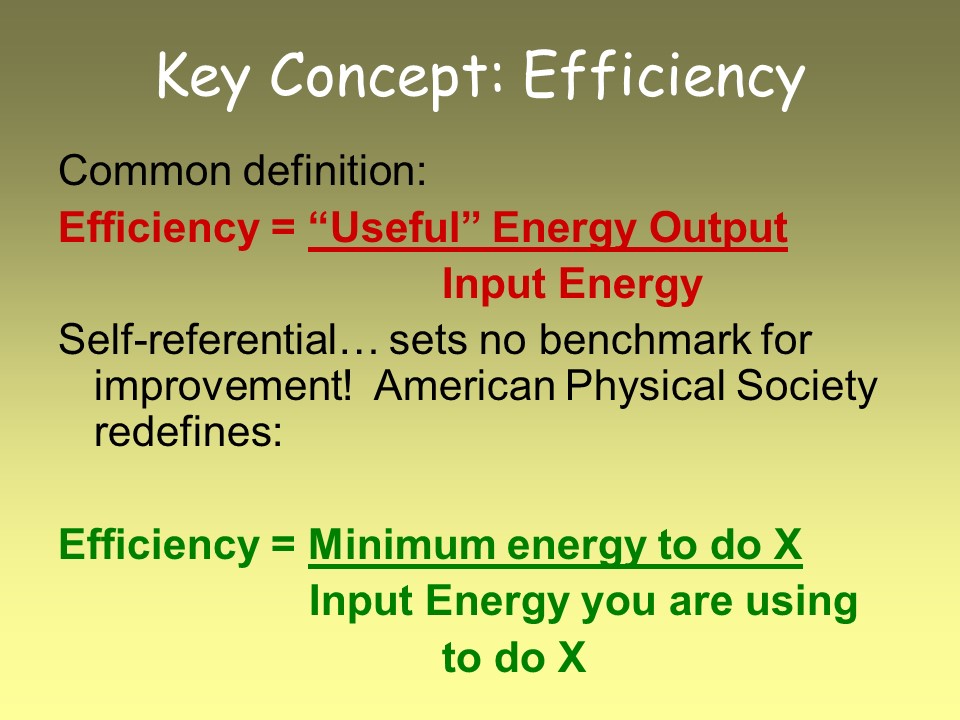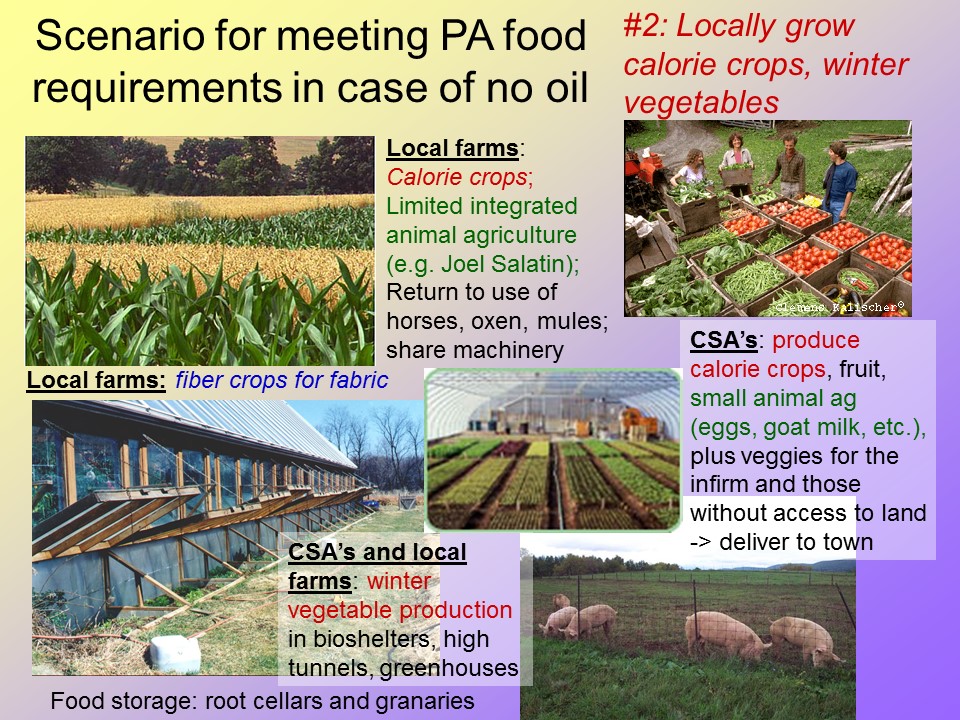Above: Greenhouse in late winter with cover crops and new blossoms on peach.
Low Energy Agriculture
|
With our current technology for getting food to our tables, we in the west expend a prodigious amount of fossil energy, energy destructive to the earth in both its production and deployment. This is in stark contrast to traditional cultures which operated under direct solar energy. One of the big challenges we face in the west is reducing our ecological footprint, enlarged by our extravagant use of fossil energy. In a study presented at PASA in 2006 we explored issues attending the use of fossil fuels in agriculture. We covered the following topics:
The presentation took two forms: a powerpoint presentation, and the full text of our study "Implications of and Alternatives to Petroleum-Based Agriculture." Later on, in 2013, we closed out a day-long PASA workshop on The Low Energy Homestead with an accounting of our own energy budget at Neo-Terra. The results underscored two important points: 1. Despite the emphasis placed on homestead production of food, the actual proportion that food production occupies in the overall energy budget is minuscule; and 2. The biggest contributions to our total energy budget are largely outside our direct intervention; that is, we all rely on fossil fuels for transportation in its many guises and for electricity, itself produced by fossil fuels. Below: We show the pie chart for our energy use. The total comes to 91 million BTUs, but this does not include energy embedded in other activities (indirect energy consumption). |
Above: The first definition shown above is commonly used, but represents only device efficiency, and is VERY misleading. We should be thinking in terms of the second definition. See the full text of our study for elaboration and examples.
Below: One of five scenarios for meeting PA food requirements.
|




